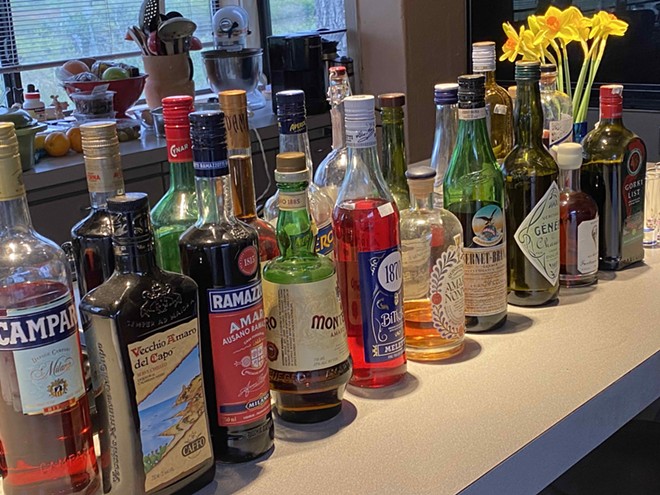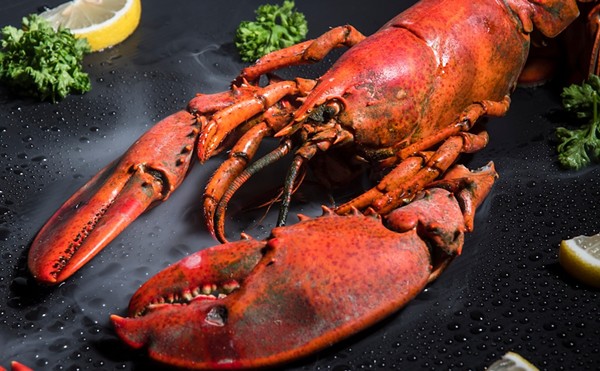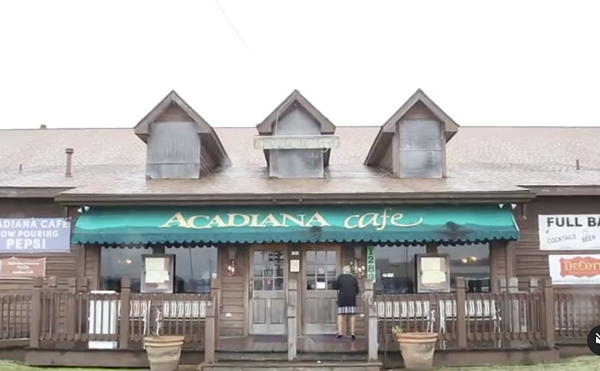
Credit for America's recent awakening to the joys of bitter spirits can likely be bestowed on the Negroni, a bracing cocktail of gin, sweet vermouth and Campari. Of course, it also got an assist from that inescapable Instagram darling the Aperol Spritz.
While we're assigning credit, let's also recognize Italy as the spiritual home of the amaro tradition — a variety of bittersweet herbal liqueurs made by infusing an alcoholic base with herbs, aromatic bark, spices, flowers and the like.
These spirits evolved through the toils of medieval monks who were involved in the making of bitter, allegedly curative, brews — presumably when said monks weren't otherwise occupied in prayer. By the early 19th century, though, production had shifted away from the monastic and medicinal to the frankly commercial.
As a whole, the category defies categorization, with some amari — the Italian plural — traditionally being thought of as aperitivi (to be consumed before a meal) or digestivi (to be enjoyed after). But even that distinction is largely ignored in today's cocktail environment.
Grasping for an organizing principle, I decided to go from the lighter, such as Aperol, to the darker and generally more daunting, such as Fernet. The latter is the famed "bartender's handshake," consumed as a bracing shot after a shift.
The tasting gang — which also included a poet, a photographer along with a journalist and musician — dutifully sampled all spirits neat and at room temperature first. However, we found that we appreciated most of them best with an ice cube and a splash of soda. We also found that popularity didn't guarantee favorites.
"I never want to taste Aperol straight again," said one taster of the amari category's social media darling. It landed at the bottom in the first flight of six. That flight also included Negroni-component Campari, which tasters found "medicinal" and bracing; saffron-infused Meletti 1870, bitter and spicy; Poli Airone Rosso, grapey sweet with moderate bitterness; wine-based Cappelletti Americano Rosso, complex and medium-bitter; and grappa-based Amaro Nonino Quintessentia, pretty and subtle.
Make any of these into a spritz with sparkling wine topped with soda.
The second flight moved into the browner and deeper amari. Two similar products, the artichoke leaf-based Cynar and the cardoon thistle dominant Cardamaro both scored high, the Cynar for its pleasantly bitter-earthy notes and the Cardamaro for its slightly brighter nose and hints of orange peel. Venerable Amaro Ramazotti, with suspicions of cinnamon and cola, was pronounced pleasant but not especially distinctive. One taster dubbed the mildly bitter Montenegro Amaro Italiano "a gateway" amaro. In its home of Calabria, Vecchio Amaro del Capo is traditionally served straight from the freezer. Lightly chilled it was everyman-herbal. And then, at 39% ABV, there's the fearsome Fernet-Branca: medicinal on the nose, menthol-minty on the palate, and with some mitigating sweetness to blunt the shock.
Round three took us out of Italy and into France. The French didn't do away with bittering elements such as cinchona bark and gentian, but the results often seem more floral. Bigallet China-China wears its 40% ABV lightly while revealing its distilled base of both sweet and bitter oranges. An indispensable substitute for Campari in the White Negroni, Suze leans heavily on gentian root for its refreshingly dry floral and lemony character. And Genepy le Chamois waves the banner for alpine wormwood — think absinthe — bolstered by chamomile.
Not to be outdone, American producers are surging into the spotlight. As the name suggests, Bruto Americano seems built on the Italian model. Coming across as sage-like on the nose and Fernet light on the palate, it might work swapped in for Campari in a "Newgroni." Forthave Spirits Marseille's name is more about a back story than any French parentage. One of the few that was actually appealing neat at room temperature, it conjured eucalyptus and mint. Along with the uniquely flavored Brucato Chaparral, flaunting California-sourced yerba santa, it was one of our five favorites, described by one taster as evoking "leaning in to kiss the neck of a new lover."
Needless to say, It was getting late by the time of that pronouncement.
The American amari may be harder to find on local shelves, but the remaining three favorites — Amaro Nonino, Cappelletti and Genepy — should be easier to locate. Easier yet, check out local bars such as Bohanan's, 1919, Rock and Rye and Hands Down for cocktails incorporating amari, which remain the best way to turn bitter spirits into long-term lovers.
Follow us: Google News | NewsBreak | Instagram | Facebook | Twitter















